Rapid Diagnostic Tests for Greenhouse and Nursery Crop Monitoring
Although rapid diagnostic tests have been available for a number of years, they have not been fully utilized by Oklahoma producers. These tests allow for fast and accurate disease diagnostics in greenhouse, nursery and field settings. Few materials are required and the rapid results can be used to guide management decisions, including selection of the appropriate chemical for disease control.
Advantages
Rapid
Plants exhibiting suspicious symptoms (Figure 1) can be tested on-site with diagnostic test kits. Results are available in 5 minutes to 30 minutes. If the sample is sent to a plant diagnostic laboratory, delivery alone may take two days or more.
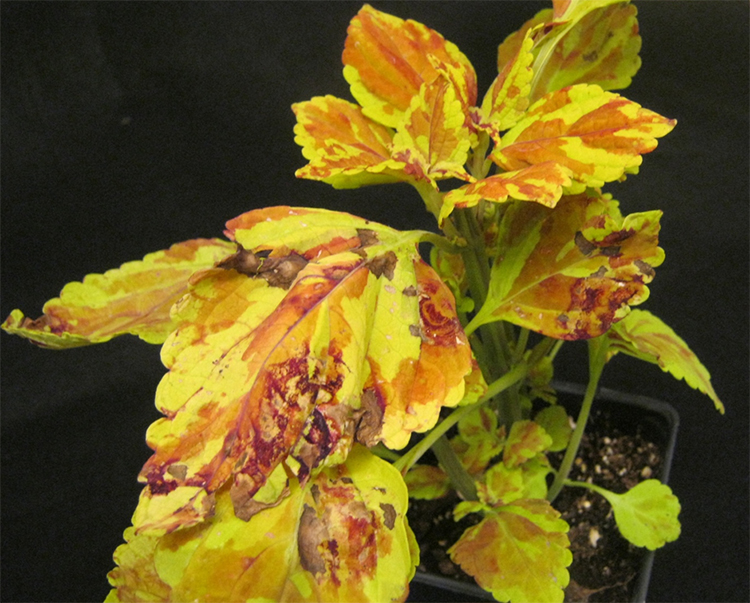
Figure 1. On-site diagnostic kits can be used to rapidly test suspicious symptoms in greenhouse and nursery crops.
Accurate
The results are highly accurate for symptomatic plant material. In some cases, the test will detect the listed organism, as well as closely related pathogens. This will be indicated on the kit instructions.
If screening asymptomatic plants, it is suggested to send plant material to a diagnostic plant laboratory, since the rapid tests may not detect the pathogen in asymptomatic plants.
Simple
The tests do not require any specialized training or experience. All materials are included in the test kit, except commonly available supplies including paper towels, scissors and a blunt object (such as a marker).
Safety
The test materials are safe and non-hazardous. They can be stored in the refrigerator until needed.
Wide Selection
Rapid test kits are available for a large number of plant pathogens. Table 1 (page 5) lists the more common plant pathogens in greenhouses and nurseries that can be tested with rapid tests. A list of U.S. suppliers is shown in Table 2 (page 6). Contact the suppliers or visit their websites for complete lists of rapid tests.
Good Shelf Life
Tests can be purchased in small (5 to 10) or large (25 to 50) quantities. Shelf-life is one year or more, if properly stored in the refrigerator. Desiccant packets are included to keep materials dry, so do not remove them from the test kits.
Low Cost
Cost is $10 to $ 20 per test (including shipping), depending on the exact test and supplier. Shipping costs to the diagnostic plant laboratory or time taken to drive to an Extension office generally cost more.
Disadvantages
Interpretation of results
If a test yields a positive result, the kits do not provide management recommendations. Consult the local county Extension office, Extension Specialist, or chemical representative for guidance.
Results are pathogen specific
The tests only provide a positive or negative result for a single pathogen. If the results are negative, the grower may need to test for additional organisms. Contact a plant diagnostic laboratory if additional testing is needed.
Tests are not available for all pathogens
Table 1. Abbreviated list of rapid, on-site diagnostic tests for greenhouse and nursery growers.*
| Disease | Hosts | Pathogen | Testing formats |
|---|---|---|---|
| Bacterial blight | Geranium, Pelargonium | Xanthomonas campestris pv. pelargonii | Agristrip |
| Bacterial wilt | Geranium, tomato, potato | Ralstonia solanacearum | Agristrip, ImmunoStrip® |
| Calibrachoa mottle | Calibrochoa, Petunia | Calibrachoa mottle virus (CbMV) | ImmunoStrip® |
| Cucumber mosaic | Many | Cucumber mosaic virus (CMV) | Agristrip, ImmunoStrip® |
| Fire blight | Rosaceae (apple, pear and related) | Erwinia amylovora | Agristrip, ImmunoStrip® |
| Hosta virus | Hosta spp. | Hosta Virus X (HVX) | ImmunoStrip® |
| Impatiens necrotic spot | Many ornamentals | Impatiens Necrotic Spot Virus (INSV) | Agristrip, ImmunoStrip® |
| Pepino mosaic | Tomato, basil | Pepino Mosiac Virus (PepMV) | Agristrip, ImmunoStrip® |
| Phytophthora diseases | Many | Phytophthora spp. | ImmunoStrip® |
| Plum Pox Virus | Peaches, Nectarines, Prunus spp. | Plum Pox Virus | Agristrip, ImmunoStrip® |
| Potyvirus group | Many | Potyvirus group viruses | ImmunoStrip® |
| Tobacco mosaic | Many | Tobacco Mosaic Virus (TMV) | Agristrip, ImmunoStrip® |
| Tomato mosaic | Many | Tomato Mosaic Virus (ToMV) | Agristrip, ImmunoStrip® |
| Tomato spotted wilt | Many ornamentals | Tomato Spotted Wilt Virus (TSWV) | Agristrip, ImmunoStrip® |
*Contact supplier or view their websites for a complete list of products.
Basic Instructions for Using a Rapid Test
Select plant tissue
Symptomatic plant tissue is preferred (A and B). Samples can be cut or torn from several plants or plant parts. If roots are used, rinse roots in water to remove soil or potting mix and blot dry on paper towels.
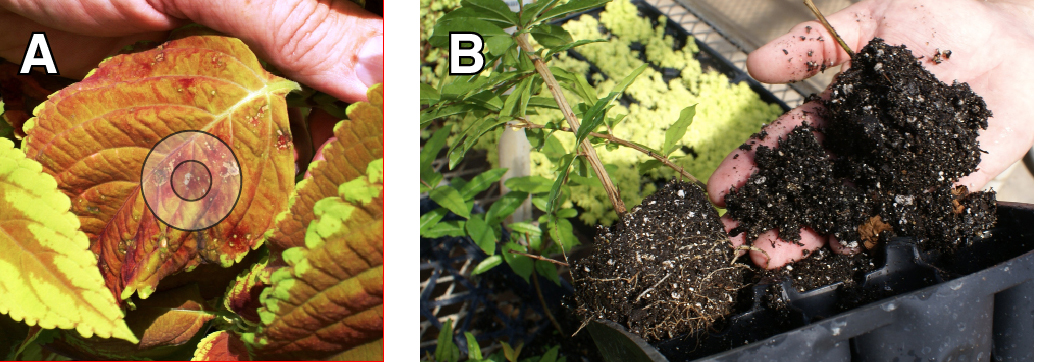
Open bag (if necessary)
Plastic extraction bags are included with the kit. Some kits include bags pre-filled with extraction buffer. These filled bags must be opened with scissors (C). Hold the bag upright so that the sample buffer does not leak from the bag.
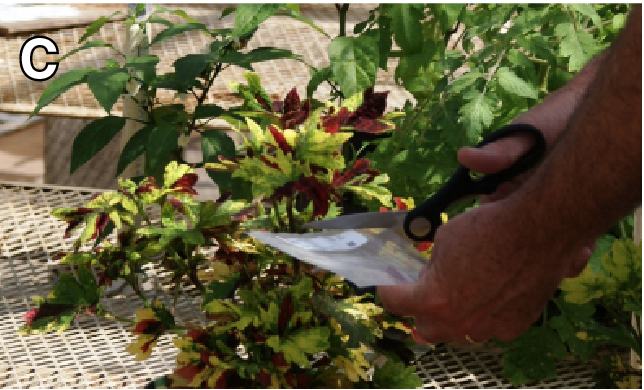
Place plant tissue in bag
Open sample bag. If two layers of plastic mesh are present, be sure to insert the plant tissue in between the layers (D). Add roughly one (1) square inch of plant tissue (E). Do not use too much plant tissue or the test may not work properly.
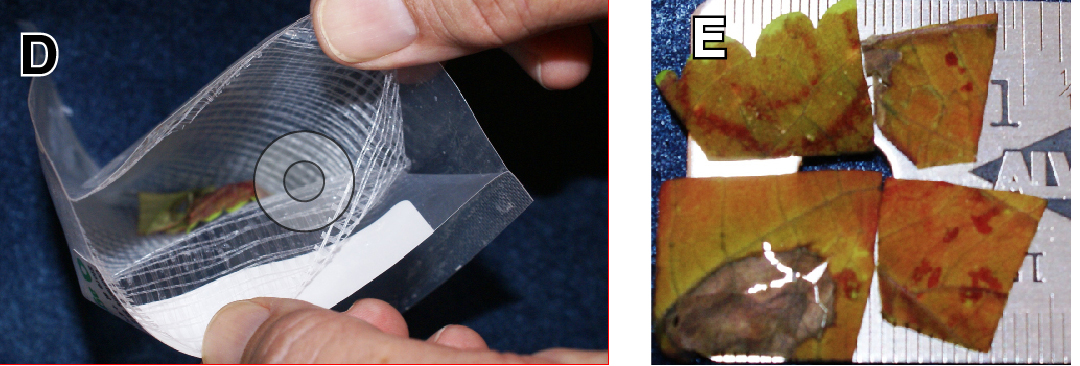
Add buffer (if necessary)
Follow kit instructions and add the appropriate amount of buffer to the bag (F). Some companies provide pre-filled bags.
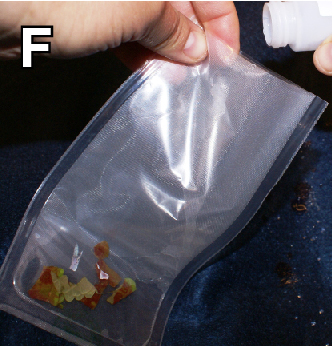
Extract sample
Rub a blunt object (ie. pen or marker) across the mesh until the plant tissue is macerated and a green-brown liquid fills the bag (G and H).

Test the sample
Strips or cartridges for specific pathogens are included with the test kit. Allow strips, cartridges and extract solution to warm to room temperature before running the test. Strip method: The extract solution may be poured into a clean container such as a drinking cup or the strip may be directly inserted into the bag (I and J). Be sure to insert strips in the proper direction and do not insert above the maximum fill line. Cartridge method: Deposit the indicated amount of extract onto the test spot (K).
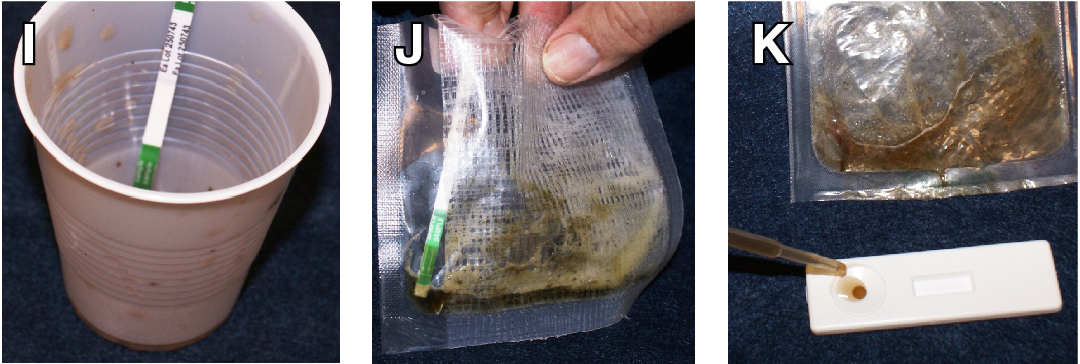
Interpretation of results
Wait the indicated amount of time and examine the test strip or cartridge. If there is only one line (C- control line) this indicates the test worked properly, but the result is negative.

If two lines are present (T-test line and C-control line), the test worked properly and the sample is positive for the tested pathogen.

If no lines are present, the test is invalid and the user should visit the troubleshooting guidelines listed below and included with the test kit.
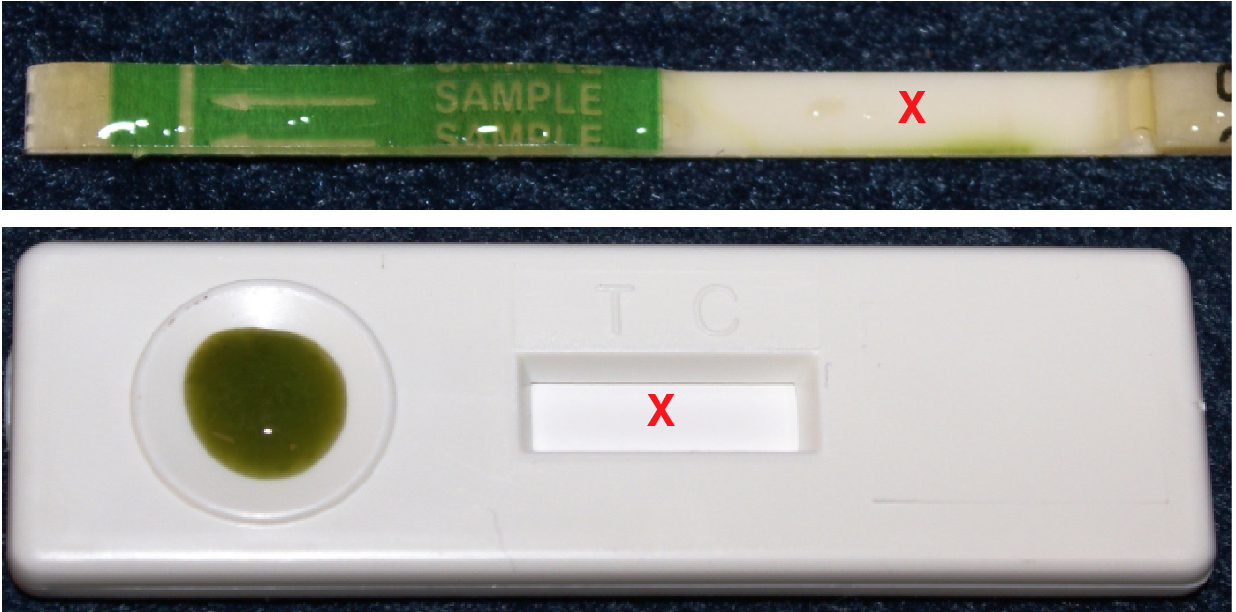
Troubleshooting
If the test malfunctioned, please review the specific kit instructions for troubleshooting. The most common errors are listed below.
1. Control line did not develop. This may occur if the sample was inserted too deep in the sample extract (L and M). This invalidates the results, so the test should be repeated.
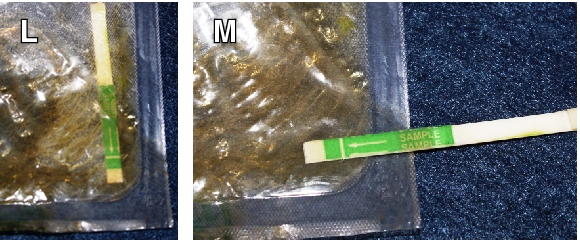
2. Extract does not move into the strip or moves very slow. In most cases, this occurs because too much plant tissue was used. The extract may be thick and viscous (N). Some plants have naturally viscous sap and this interferes with the extract moving through the paper. Rerun the test using less plant tissue or dilute the extract with additional extract buffer. Another cause may be that cold buffer was used in the test. Therefore, always warm kit supplies to room temperature before running the test.

3. Green or pigmented test line develops. The test line should be a pink-purple color. If the test line appears green, it should not be considered a positive result. It is likely too much plant material was used or the plant sap is viscous. Rerun the test using less plant tissue or dilute extract with additional extract buffer. Do not test orange, red, purple fruits without contacting the company (O). No reaction or false positive bands may appear.
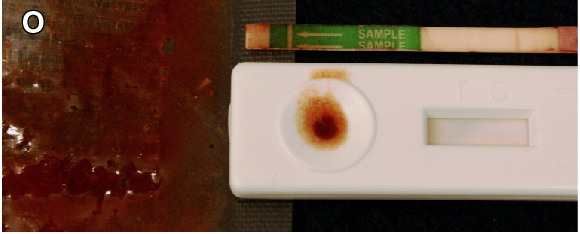
4. Test or control line is weak (faded). Verify that the kit has been used before the expiration date. It is possible that the test materials were left open too long and they absorbed moisture. Therefore, keep kit components closed and stored in the refrigerator between uses. A faded, weak T-test line may also indicate that the pathogen titer (concentration) is low in the plant (P).
5. Other concerns. If other unusual results occur, contact a product representative. They will trouble shoot the problem, but the sample may need to be forwarded to a plant diagnostic laboratory for additional testing.
Table 2. List of U.S. Suppliers of rapid test kits.*
| Sources | Rapid Test Format |
|---|---|
| Agdia Inc. ImmunoStrip® 52642 County Road 1 Elkhart, IN 46514 Phone: (800) 622-4342 info@agdia.com |
ImmunoStrip® |
|
Eurofins BioDiagnostics, Inc. Longmont, CO 80504 |
Agristrip |
| Target Specialty Products (distributor of Agdia ImmunoStrip® products) 220 NW 67th Street Oklahoma City, OK 73116 Phone: (800) 522-9701 or (405) 848-8858 |
ImmunoStrip® |
*Other suppliers may be available

